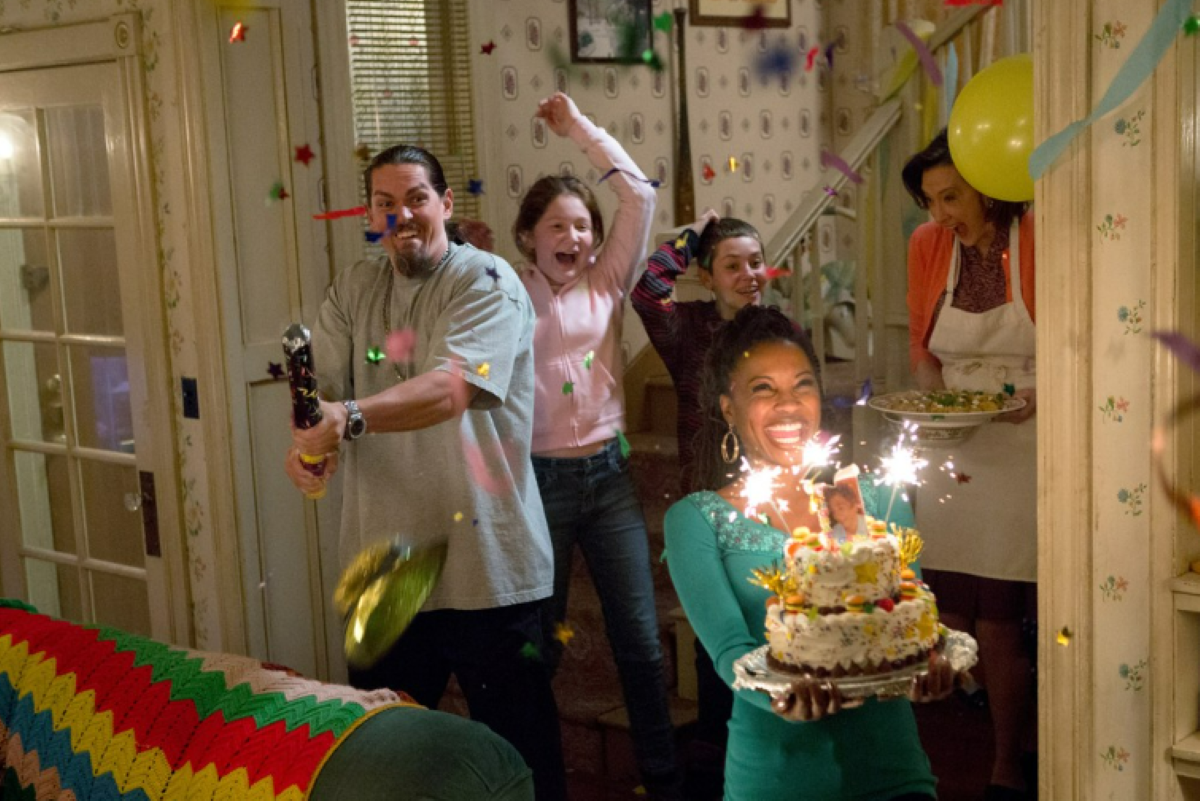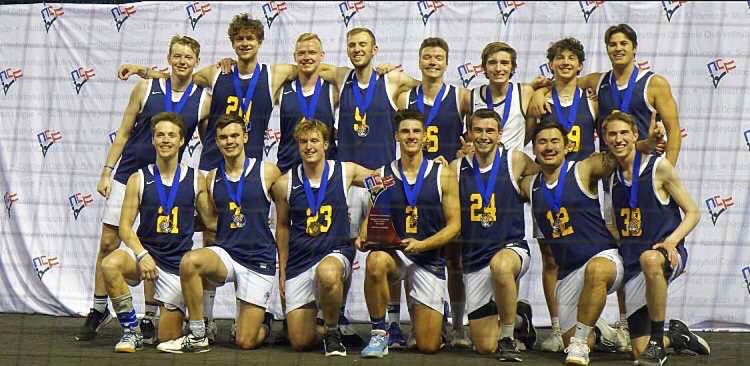Obviously, things have changed since 1972.
Milk was $1.20 a gallon. Now it’s over $3. Gas was under 50 cents. Now it’s also over $3. Richard Nixon was President and now it’s Barack Obama.
Connie Best-Ashby was a 34-year-old college freshman in 1971.
Now, in 2011, she becomes a college graduate, which is something she’s wanted since childhood.
“I’ve always liked to learn things and to know things,” she said. “Schooling was the ultimate.”
Best-Ashby will finally be completing her degree on Dec. 17. It’ll be a Bachelor of Fine Arts, with an emphasis on prints and woodcutting. She also has a minor in Native
American Studies.
Her degree has been difficult to complete because she has raised a family, worked numerous job, suffered paralysis and endured divorce, but her long educational journey will finally come to a close. Her trials and tribulations are inspirational, Director of American Indian Studies Deborah Barker said.
She has known Best-Ashby for about a year, but in that time Best-Ashby impressed Barker.
“I grew to admire her enormously,” she said. “She’s an astonishing human being.”
Best-Ashby was born in Oregon in 1938 and spent her childhood in Montana. She loved to draw. Specifically, she created architectural drawings such as houses with curved windows. She has always been fascinated by art.
“It was always something that was there,” she said. “It was just what I wanted to do.”
She moved to Eau Claire at 15 when her parents divorced. Her mom’s dad lived there and had a lot of money. She’s been here ever since.
At the age of 18, she married the only man she ever dated. Within three years, she gave birth to three children. Though she always wanted to have a college education, she had
other duties.
“I didn’t think that far ahead,” she said. “I was in love.”
Beyond marriage, Best-Ashby had a child with petit-mal epilepsy, which took-up a lot of time. Not to mention she had jobs of her own to help support the family. For instance, she worked at a pizza place and a co-op.
She also had to take kids to swimming and orchestra. Needless to say, Best-Ashby was busy.
Finally in 1972, she was able to enroll in college. The kids were old enough and there was money so she knew it was time.
However, she only was able to get to a couple semesters, until family duties arose again.
Around 1977, her husband decided he wanted a farm and Best-Ashby was going to help — maybe even a little more than she was initially aware of.
“He was still working to put money into the farm … I ended up being the farmer.”
So she added a new job to her resume: pig farmer. A job she said she was very good at.
She even worked at an auxiliary farm and greatly improved their operations.
“The last year I had cut costs in half and doubled profits,” Best-Ashby said. “In the pig market, that is really something.”
Things were going well, until 1983. This was when her husband divorced her.
Things had been rocky for awhile, but she explains he simply didn’t love her anymore.
Adding to the trouble, the farm went bankrupt. They had to auction off $1700 lawn mowers for $75.
“We lost the farm,” she said. “We lost everything.”
She said she grew depressed from the divorce, and without the farm, she had no financial outlooks.
Things got so bad that she almost sold a vital organ in the Twin Cities.
“I know I had a buyer for my kidney at that time,” she said. “They’d pay me $5000.”
It was going to be sold to a hospital, but fortunately it never came to this as she landed a job at Wagner Lanes.
She also worked as a caretaker at an apartment in Fall Creek and a factory, which she eventually got laid off from for doing another’s work.
“The sorter would be broken and I would fix it, because I wasn’t going to sit there all night and not work on anything,” Best-Ashby said.
She was about to get hired at another job, when her life took another difficult turn.
In 1987, Best-Ashby fell with pain in her back. She was rushed to a hospital. While there, she realized she was paralyzed, but the doctors were not having any of it.
“They didn’t believe me,” Best-Ashby said. “They thought I was pretending.”
They ended up misdiagnosing her and sending her home. They claimed she was depressed from her divorce and it was psychological so they gave her a psychiatrist.
Eventually the psychiatrist was able to figure out what was wrong with her from her descriptions and she got an MRI in the Twin Cities.
She had spinal stenosis, which is when the spinal column gets narrower causing pressure on the spinal cord.
She explained for years she would have numbness or loss of feeling in her limbs. It turns out that these are symptoms of the disease.
People with spinal stenosis may be unable to walk or have trouble walking for many years. This was the case with Best-Ashby.
The disease didn’t cause permanent paralysis though, as she was able to walk within a year though she did lose feeling in limbs for a couple years.
It also took her around 15 years to gain solid functioning of her hands. She was able to regain motor functions slowly with lots of exaggerated movement.
She said she rolled around on rolling pins and opened and closed scissors.
“If you could have seen me, you would have laughed your head off, but it worked.”
Best-Ashby had lots of help from friends and family along the way. They would bring her food or simply watch over her to make sure she was OK. Though she said she barely ate for awhile due to the lack of feeling.
Her husband also covered a lot of her medical bills until she got Disabilities benefits from social security.
Due to her condition and the pain it caused, she couldn’t get solid work. She said she hasn’t had a job since 1987.
She has improved since then, but she still struggles with health that she needs to over come. She said each day is a new experience.
“I don’t know what it is, but it’s always something,” she said.
However, Best-Ashby said survival was the only option
“You really don’t have a choice,” she said “(Survival) is in-bred in you.”
Despite all of these medical problems, she still took classes in the 1990s.
She wasn’t taking many credits in any given year. A few here and a few there, but nevertheless she was in college. Despite this, Deborah Barker thinks she’s a wonderful student.
“The degree of persistence she put into her research … checking it over and over again and making sure that it reflected her best ability and effort,” she said.
Recently, she has been able to afford school with a reverse mortgage on her home.
She is very happy that her degree is in art. She loves art because it is very omnipresent in all factors of life.
“It’s a part of everybody,” Best-Ashby said. “Everybody is an artist.”
Native Americans are intrinsically artistic in regards to how they live, she said. Therefore art and Native American History are a natural fit.
Plus she is part Cree Indian, so she feels like she has no choice but to study it.
“It’s not that I like (the subject),” she said, “it’s a part of me.”
Her art is award winning and she just participated in her senior BFA show at the Foster Gallery.
She feels more energized now more than ever and wants to keep creating artwork for the rest of her life.
Barker cites this energy when she saw Best-Ashby this past summer.
“There she was, just as energetic and spry running around doing her errands,” she said. “It was a great pleasure to see her.”
Best-Ashby is planning on living until she is 90, though she was told she could live even longer.
“My heart doctor says I should go farther than 90 (years old), but I thought I should be conservative.”





